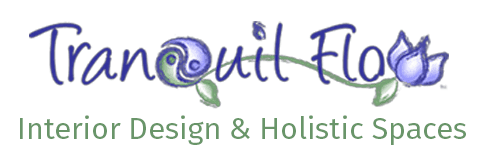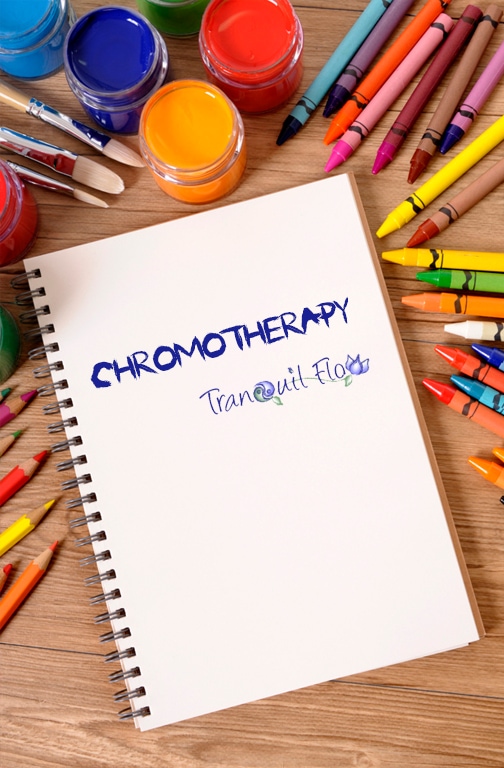
Healing With The Rainbow

As an artist and designer, I have always been fascinated by color. Color affects us wherever it is, and in whatever form it comes to us. It starts when we are children — we look with wonder at those big boxes of crayons and we joyfully squish finger paints between our fingers to create refrigerator masterpieces. Do you remember what it was like to walk into a candy store? It was so exciting! Your mouth watered from simply looking at those giant brightly colored lollipops, gummi bears and jelly beans. Whether we realize it or not, every day we are influenced by color, and color can even be a key to our personalities. We all use terms to describe the way we feel – “I feel blue”, “I’m green with envy”, or “I am feeling a bit off color.”
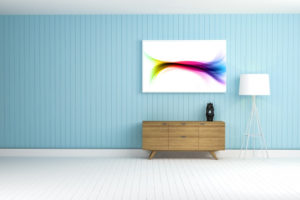
In Psychology, color is a brilliant analytical tool and, by tapping into the subconscious, can get to the root of physical and emotional problems. There are a number of studies that link colors to specific responses. It has been found that colors used in the design of an environment can have significant impact on the emotions and performance of people in that environment. For example, studies have found that weight lifters give more powerful performances in rooms painted blue, pink can calm prisoners and babies cry more often in rooms that are yellow. As a designer, I understood that color in our environment influenced how we felt, but it was not until years later when I began a career in Holistic Health as a result of my own chronic health challenges, that I learned color could be used in healing. Chromotherapy is a complementary therapy used today, which works in a subtle way with other types of treatments. It is used to balance energy, aid in creativity, release blocks and help restore equilibrium to the body. This, in turn, helps promote physical, emotional, mental and spiritual well-being. Chromotherapy is currently popular in Europe, Australia and Canada, and is gaining popularity in the United States. Chromotherapy, while recently rediscovered, is nothing new. It has been used by ancient cultures such as the Egyptians, Mayans, Chinese, Indians, and Native Americans for thousands of years. Hippocrates, the Father of modern medicine, knew the importance of balance in the body, mind and spirit. He believed in utilizing color as an intrinsic part of the healing process. Dr. Edwin Babbit, a modern practitioner of this ancient science, published a book titled The Principles of Light and Color, which describes the effects of the different colors of the spectrum and their therapeutic uses. Other modern practitioners are Rudolph Steiner, Max Luscher and Theo Gimbel.
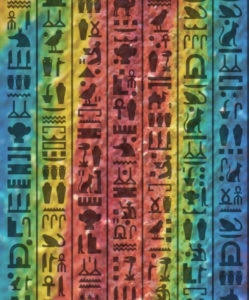
So, now that you know Chromotherapy exists, you have to be wondering – How does it work? Color energy comes to Earth in the form of electromagnetic vibrations contained in white light. Our eyes sense the light, which is only a small part of the electromagnetic radiation. Our brains interpret it to produce the visual sensations of color. We all know that nothing is more important to us on Earth than the light of the sun, without it nothing on earth would survive. We also would not be able to see color without light. Light itself does not have color, but each visible waveband produces a different color sensation on our brain. Our eyes are only able to detect a tiny part of the electromagnetic spectrum, most of them represented in the colors of the rainbow. Each of these colors has a different vibration and wavelength. Red has the longest wave length and slowest vibration, while violet has the shortest wavelength and highest vibration. These vibrations have an impact on our emotional, mental and nervous systems, as well as our physical and spiritual well-being. The energy from colored light provided by the sun enters our eyes and travels to our pituitary gland, which then secretes hormones that regulate a wide variety of bodily functions. Color is also absorbed through the skin, which affects every cell in our bodies.
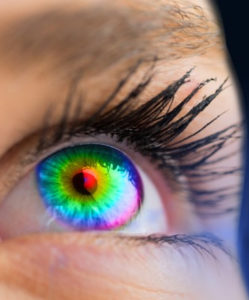
Our cells are light sensitive, so color vibrations affect them causing fine biochemical changes to take place. We not only absorb light through the eyes and skin, we also draw in light energy through our subtle body. The subtle body is an energy field which has structure and consists of several interconnecting layers known more commonly as the “aura”. One of the main functions of the aura is to draw in white light from the sun, breaking it down to its component energies and sending it to the appropriate body energy centers, known as the “chakras”. Our chakras exist on the Etheric plane and resemble wheels of energy. Each chakra corresponds to the endocrine glands in the physical body and its color frequency. The chakras are aligned in an ascending column from the base of the spine to the top of the head. Their function is to spin and draw in life force energy to keep the spiritual, mental, emotional and physical health of the body in balance. A free flow of this energy is vital to our health and well-being. When our bodies are healthy, the chakras absorb and distribute energy evenly. The etheric body is the layer in the aura that serves as a filtration system and is an interface between the physical body and other subtle bodies of the aura. It is particularly fascinating in that the etheric body has the same energetic counterpart as the physical body, including the cells, anatomical structures and all of the organs. As an example, people who have had a limb removed often complain that they still feel sensation or pain in the area of the missing limb. This is known as “phantom limb pain”. The removal of the limb does not remove the corresponding etheric limb, causing the person pain for some time. Most illnesses develop in the emotional, mental or spiritual body long before showing up as physical symptoms. In an unhealthy state, toxins may begin to build up which can eventually affect us physically, emotionally, mentally or spiritually.

Color Therapy is a complementary method of promoting health and well-being for the whole person. With our modern lifestyles changing and managing our lives in a more balanced way can help us to become and stay healthy. We are often too busy to take care of ourselves correctly – we often have poor diets, eat on the run and stay stressed and tired. We also have moved away from nature and live indoors, away from natural daylight. Ancient cultures knew how the different colors in nature affected them and used those colors to bring balance and harmony into their lives. The natural light from the sun, along with the addition of color, connects us to nature and the rhythms of the universe. The next time you walk outdoors take a moment to notice what colors draw you in. Pay attention during the day to how certain colors make you feel. Reflect on what colors are meaningful and which ones inspire you. Now that we know how color affects us, I will explain the different methods in which color therapy can be utilized. – Chromotherapy (Light Therapy) : Light Therapy treatments introduce Color energy into the physical body via the Etheric and Chakra System. It is on the Etheric plane that pure white light splits into color. A directional light is administered to various body parts in and around the body. – Color Acupuncture / Color Reflexology : Color acupuncture and Color Reflexology work by applying directional light with a crystal torch onto the chakras , the meridians, acupressure points or reflexology points. Colored massage oils or essential oils blended to match the color frequencies of the chakras can be applied as well. – Irradiation : This irradiates the entire body with colored light by using a color space illuminator. This can be done in a session which includes sound healing or it can be incorporated into a massage therapy session. – Silk Scarf Treatment : Silk has a very high vibration and, instead of light, silk cloth is used in a variety of colors. – Crystal Healing : Crystals are applied and are often used with other light treatments. – Solarized Water Treatment : Water is infused with color vibrations. – Color Breathing, Meditation and Affirmations – Color in Decor and Clothing – Color in Diet – Music with Color Therapy There are many methods and systems of Color Therapy. It is advisable to work with someone who is specially trained in this modality. Have fun exploring what options appeal to you. There are many colors to work with and each one has its own vibration and healing quality. Listed below are colors that correspond to the Chakra System and a brief description of their meaning and benefits. Enjoy!!

RED The color red is recognized as a stimulant and is exciting. Red increases enthusiasm, encourages action and confidence, and provides a sense of protection from fears and anxiety. It is the first color on the spectrum and is associated with warmth and stimulates vitality and energy throughout a living organism. Red promotes activity where there is sluggishness. Red carries the energy that is needed for the building and strengthening of the physical body. Its consciousness is oriented towards survival and corresponds to our adrenal glands. On the negative side it can be associated with a bad temper, stubbornness and anger. The Root Chakra is associated with the color red. Red has the longest wavelength and the slowest vibration. This Chakra is situated at the base of the spine and is associated with the seat of our Life Force energy, as well as the foundation of our entire system. The Root Chakra is the building block on which all the other Chakras must rest. It is associated with the earth element and grounding as well as the ability to focus and manifest our needs.

ORANGE Orange radiates warmth and energy, is fun and reflects enthusiasm .Orange stimulates the appetite and encourages socialization. The physiological effects of this color aid in digestion and stimulate the blood and circulatory processes affecting the mental, nervous and respiratory systems. Orange also oversees the health of the reproductive organs, womb, kidney, bladder and circulatory system. Negative associations with this color can be an overbearing attitude, exhibitionistic behavior and flamboyance. Orange is associated with the Sacral Chakra which is located slightly below the naval. This is the energy center for creativity which includes relationships of all kinds. This Chakra is the center of sexuality as well as the emotions, pleasure, sensation and nurturance. Orange’s element is water.

YELLOW The color yellow is the color of the sun and creates optimism and happiness. It is associated with enlightenment. The golden shades of yellow carry the promise of a positive future and spark creative thoughts. Yellow is stimulating to the nervous system, activates memory and encourages communication. The physical effects of yellow strengthen the nervous system and muscles including the heart, creating better circulation. It also assists in stimulating various bodily functions such as the action of the gallbladder and liver. The negative aspects of yellow are controlling behaviors, vindictiveness and cold calculation. Yellow is associated with the Solar Plexus Chakra. This is the Chakra of will power, joy, assertiveness and motivation. The element connected to this Chakra is fire and its purpose is transformation. It is the fire of our will that propels forward movement and the initial task is to overcome inertia.

GREEN Green is the color of peace and harmony, and is seen as tranquil and refreshing because of its balance of cool undertones. Green is soothing and relaxing both mentally and physically. It helps alleviate depression, nervousness and anxiety, as well as offering a sense of renewal. Green is beneficial for the sympathetic nervous system and it is useful in general healing, balancing and cell restoration. It balances the physical energies of the heart and governs the blood pressure and lungs. It is also related to the thymus which is located in the chest. This organ is part of the immune system, as well as being part of the endocrine system and also responds to the color of turquoise. Some of greens negative aspects are poor judgment, over caution, jealousy, envy and selfishness. Green is associated with the Heart Chakra. The Heart Chakra is associated with love and compassion. This Chakra is the bridge that connects the lower and higher energies of our being and is the place where our spirit resides.

BLUE Blue is the overwhelming favorite color and is associated with trustworthiness, dependability and commitment. This is the color of the sky and the ocean; it invokes rest and causes the body to produce chemicals that are calming. Blue is very cooling and aids in intuition. It marks a deeper entry into the realms of the spirit bringing with it serenity, peace and faith. The physical effects of blue reduce heat as well as having a calming, relaxing effect. The negative aspects of blue are feelings of melancholy, inertia, laziness, complacency and dullness. Blue is associated with the Throat Chakra and its element is sound. The Throat Chakra is related to communication, self-expression and creativity. It is the Chakra of diplomacy as well as where the inner voice of one’s truth is expressed. This Chakra governs the actions of the thyroid, a gland that is in the throat which produces the Thyroid hormone.

INDIGO/DARK BLUE Indigo or deep blue relates to intuition and self-responsibility. Its positive aspects are a sense of unity, faithfulness, a sense of duty and idealism. Indigo is sedating and aids in intuition. The negative aspects of indigo include fearfulness, separation from reality, depression and timidity. Indigo is associated with the Third Eye Chakra or Brow Chakra and is located in the center of the head behind the forehead or slightly above eye level. Sometimes called “The seat of the Soul “, it is linked to the pineal gland. It is also the Etheric organ of psychic perception which allows us to see beyond the physical world bringing us added insight. Light is the corresponding element to this Chakra and through the sensory perception of light we obtain information about the world around us.
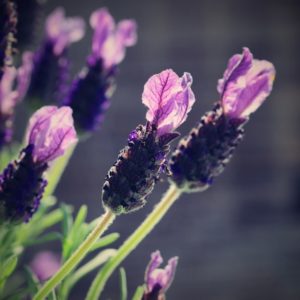
VIOLET/PURPLE Purple embodies the balance of red stimulation and blue calm. Violet is the most intuitive of colors and people attracted to it are likely to be seeking spiritual development. Violet can be uplifting, calming to the mind and nerves, and can offer a sense of spirituality. Violet also encourages creativity. Violet helps to normalize glandular or hormonal activity because it is connected to the function of the pituitary gland. Other body parts it affects are the cerebral cortex and the central nervous system. The negative aspects of violet include forgetfulness, lack of endurance, argumentativeness, disrespect, pride and arrogance. Violet is associated with the Crown Chakra located on the top of the head and represents the highest level of consciousness and enlightenment. It is also the shortest and highest vibration. This is the Chakra that is responsible for our intuition, imagination, clairvoyance and psychic abilities.
Kandace Dole is an Intuitive Empath and Holistic Health Practitioner , which includes training as a Massage Therapist, Integrative Reflexologist, Shamanic Practitioner and Certified Chromotherapist ( Color Therapist). She also has a degree in Interior Design and is an Advanced Feng Shui Design Professional ( AFDP) trained in both Western and Classical Feng Shui. She is a professional member of IFSG ( International Feng Shui Guild) and an Allied Member of ASID ( American Society of Interior Designers). She utilizes her experience to help promote health, balance and well-being in the Mind, Body, and Soul, as well as Environmental Healing . Kandace Dole AS, AFDP, IFSG, Green AP Allied Member of ASID (American Society of Interior Designers) Phone: (919) 923-7143

